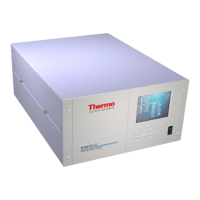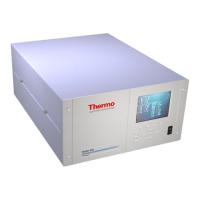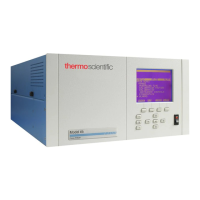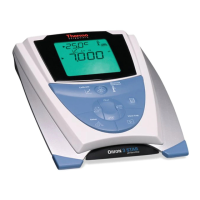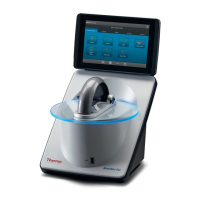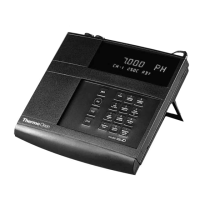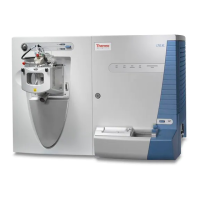
Do you have a question about the Thermo Finnigan LTQ and is the answer not in the manual?
| Mass Range | m/z 50-2000 |
|---|---|
| Resolution | Unit mass resolution |
| Mass Analyzer | Linear Ion Trap |
| Detector | Electron Multiplier |
| Ion Source | Electrospray Ionization (ESI) or Atmospheric Pressure Chemical Ionization (APCI) |
| Polarity | Positive and Negative |
| MSn | Up to 10 stages (MS10) |
| Mass Resolution | Unit mass resolution |
| Vacuum System | Differentially pumped with turbo pumps |
| Power Requirements | 230 VAC, 50/60 Hz |
Discusses the two operating modes for ion polarity: positive or negative.
Covers electrospray, APCI, APPI, and nanospray ionization techniques.
Explains the function and control of the autosampler for automated sample injection.
Overview of the MS detector, its features, and main components.
Outlines essential daily checks before starting sample analysis.
Describes procedures to follow after completing daily operation.
Lists necessary tools, equipment, and chemicals for routine maintenance procedures.
Covers maintenance procedures for the API source components.
Steps to place the LTQ system in standby mode for short periods of non-use.
Steps to restart all system components after a complete shutdown.
How to use the LTQ diagnostics to test electronic circuits and locate problems.
Steps for replacing internal power supply modules (PS1, PS2, 300V, 8kV).
Lists replaceable parts for various MS detector subsystems like ESI source, APCI source, etc.
Lists various fittings, ferrules, sample loops, and tubing for system connections.
